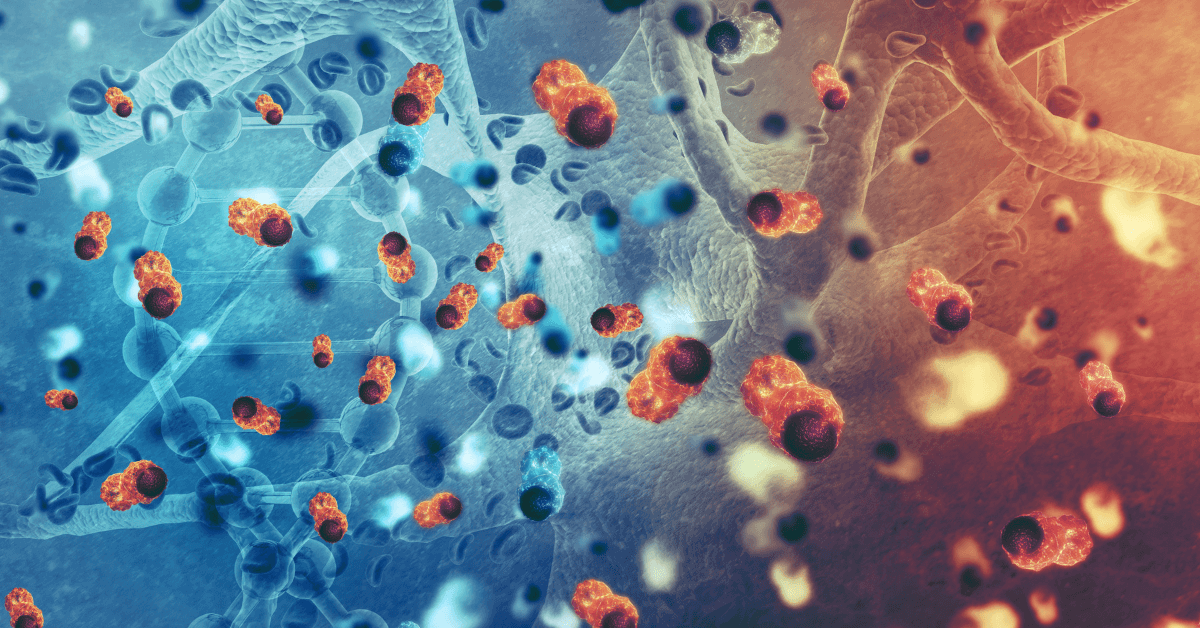Nanorobotics in Cancer Treatment: Advancing Oncology’s Future
Nearly 10 million people die from cancer every year, making it one of the biggest worldwide health issues. Nanorobotics in Cancer Treatment-Conventional treatments like radiation and chemotherapy frequently damage healthy cells and have serious adverse effects. We introduce nanorobotics, a cutting-edge science that uses small devices to precisely target malignancies. Let’s examine how cancer therapy is changing as a result of these tiny wonders.
1. Overview of Nanorobotics: Minimal Technology, Massive Effect
Designing robots that are smaller than a human hair—typically between 1 and 100 nanometers—is known as nanorobotics. These devices are created by engineers using biocompatible materials like proteins, DNA, or artificial polymers. In contrast to traditional medications, nanorobots can identify cancer cells, move through the circulation, and provide treatments straight to tumors.
Applications in cancer might propel the worldwide nanorobotics industry to over $12 billion by 2030. These robots offer more individualized care, more effectiveness, and fewer adverse effects. We will then analyze how they combat cancer.

2. How Cancer Cells Are Hunted by Nanorobots-Nanorobotics in Cancer Treatment
Biomarkers are used by nanorobots to detect cancers. Proteins that serve as homing cues, such as EGFR or HER2, are overexpressed in many cancer cells. Antibody-coated robots adhere to these markers, guaranteeing precise delivery.
Nanorobots deploy payloads after they are connected. Some use gold nanoparticles to create heat to kill cells, while others release chemotherapeutic medicines. According to a 2023 Nature article, DNA-based nanorobots that deliver thrombin to mice’s tumors can reduce their blood supply by 70%.
Furthermore, sensors on nanorobots track temperature or pH variations, allowing for real-time corrections. This flexibility reduces the harm to healthy tissues.
3. Innovations in Nanorobotic Architectur-Nanorobotics in Cancer Treatment
A. Robots Made of DNA Origami
When researchers come into contact with malignancies, the 3D structures they have created by folding DNA strands unfurl. A “DNA claw” created by Harvard researchers only releases medications in acidic tumor settings.
B. Systems Guided by Magnetic Fields
Iron oxide-cored nanorobots use external magnetic fields for steering. A team at ETH Zurich removed rats’ prostate cancers using this technique in three weeks.
C. Hybrid Bacteria
For propulsion, engineers combine bacteria such as E. coli with nanobots. These biohybrids penetrate thick tumors that are inaccessible to medications alone by swimming through physiological fluids.
D. Bots Activated by Light
When exposed to infrared light, photosensitive nanorobots activate and release medications as needed. This spatiotemporal control prevents premature drug leakage.

4. Current Clinical Trial Applications-Nanorobotics in Cancer Treatment
A number of nanorobotic treatments are moving from research facilities to clinical settings:
In Phase II studies, BIND-014 is a nanoparticle that delivers docetaxel specifically to prostate cancers while lowering systemic toxicity.
For recurrent glioblastoma, NanoTherm—a magnetic nanoparticle heated by alternating magnetic fields—has received European approval.
CRLX101, a cyclodextrin-based nanoparticle that contains camptothecin, shows promise in Phase Ib/II studies for ovarian cancer
In 2024, the FDA accelerated the development of “NanoDox,” a robot that targets breast cancer stem cells and contains doxorubicin. According to preliminary data, survival rates are 50% greater than those of conventional chemotherapy.
5. Difficulties with Nanorobotic Cancer Treatment
A. Problems with Biocompatibility
Certain substances cause immunological reactions. To avoid detection, scientists now employ lipid coatings or human serum albumin.
B. Manufacturing Complexity It is still challenging to produce homogeneous nanorobots in large quantities. By automating assembly, microfluidic chips have increased yield by 300%.
C. Obstacles to Navigation
A dense tumor stroma blocks robot mobility. Ultrasound-driven bots or enzymes that break down extracellular matrix proteins are examples of solutions.
D. Barriers to Cost
Currently, a single nanorobotic therapy costs around $20,000. By 2030, manufacturing scaling and AI design might drastically reduce costs.
6. Safety and Ethical Aspects
A. Prolonged Harmfulness
Organs may collect nanoparticles. To guarantee safe excretion, researchers use PET scans to monitor silicon-based bots.
B. Dangers of Dual Use
Bad actors might use nanorobots as weapons. Regulatory agencies like the WHO advocate for strict export regulations on nanotechnology.
C. Issues of Equity
High charges may restrict access. Low-cost nanorobotic initiatives for developing countries countries are funded by NGOs such as the Gates Foundation.
7. The Future: Beyond A with AI.
A. Design Driven by AI
To build more intelligent bots, algorithms such as AlphaFold forecast protein shapes. In 2024, the AI-powered nanorobots from Insilico Medicine began preclinical testing.
B. Intelligence from Swarms
Chemical signals are used by swarms of nanorobots to coordinate attacks on metastatic cells. Swarms eradicated pig lung metastases, according to a 2023 Science Robotics study.
C. Immunotherapy Integration Recent animal trials found that delivering checkpoint inhibitors to tumor microenvironments using nanorobots increased melanoma survival by 60%.
D. Diagnostic-Therapeutic Combinations “Theranostic” bots use MRI contrast agents to assess tumors while administering medication, allowing for real-time therapy monitoring.

8. Redefining the Battle Against Cancer: A Conclusion
Beyond science fiction, nanorobotics gives cancer sufferers real hope. Partnerships between biotech companies and academic institutions accelerate advancements, despite the existence of issues like cost and safety. These little soldiers may eventually take the place of invasive procedures and harsh chemotherapy.
Keep yourself updated by monitoring clinical studies conducted by organizations such as the NIH or MD Anderson. Oncology’s future is not just smaller but also more intelligent.



